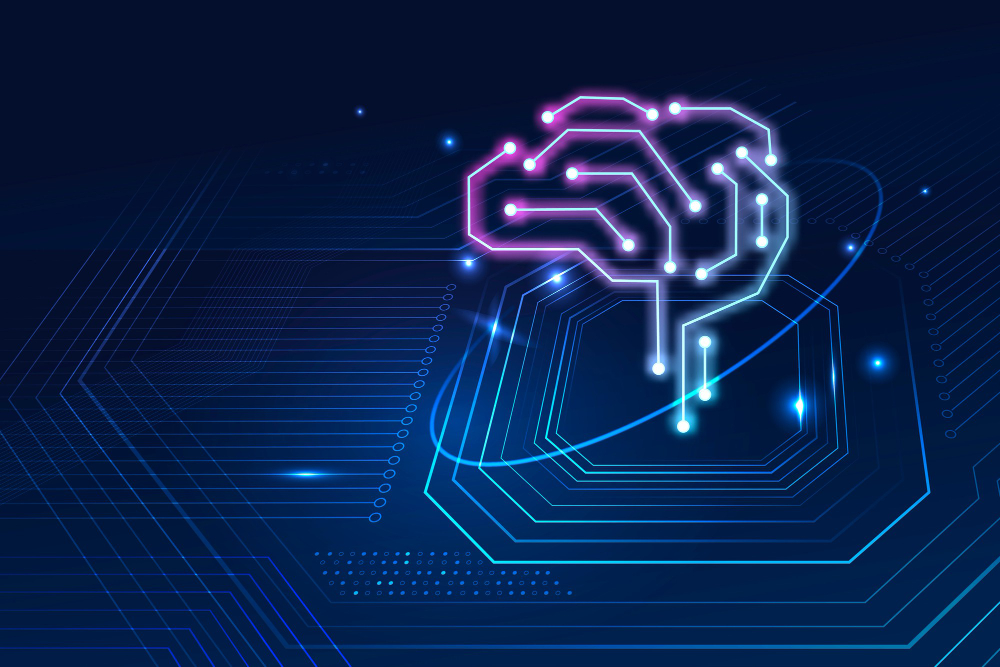- There are many different approaches to decision intelligence, ranging from using AI to clean up and merge data sets to using automation to take action.
- Leading AI approaches include collaborative DI, operationalised DI, DI with automation, and cognitive DI.
- It’s important to choose the right DI approach for your industry and use case.
Today’s enterprises have learned that data alone is not enough to drive effective decision-making. They need reliable insights, in real time or near-real time, that connect the dots between data and fast-moving challenges and opportunities.
The right decision intelligence (DI) solution is the missing piece that translates data into useful predictions, pointing decision-makers towards the best strategy. However, the wrong one can waste everyone’s time and lead the company in the wrong direction entirely, making the choice of DI solution critically important for success.
As the next generation of business intelligence (BI), decision intelligence is a relatively fresh concept. Using software to derive actionable strategic insights from business data is hardly new. Using AI and automation to simplify the underlying processes involved – and to actually execute operational changes – has only been possible for the past two or three years.
As the space continues to mature, different DI vendors take different approaches, making it important to choose the one that best matches your use cases, industry, and users. This article compares the approaches of six top decision intelligence solutions to help enterprises find the best fit.
Read on for the full guide or go straight to your preferred section:
Different approaches to decision intelligence
There are many variables to consider when comparing DI solutions, including:
- Usability
- Range of data sources
- Cost
- Security and compliance
- Speed of response
- Customisation options
- Platform scalability
But the key issue is the provider’s approach to DI. While every solution aims to unify data, reveal insights, weigh up actions, and evaluate outcomes, each vendor reflects a different attitude.

The main approaches to decision intelligence are:
- BI, AI and Automation: Extending business intelligence (BI) with machine learning, AI, automated workflows, and natural language, so that insights lead directly to next action. The top vendors here include Pyramid Analytics and Microsoft Fabric.
- Cognitive and autonomous decision systems: Modelling decisions as living processes for AI agents to monitor, recommend, execute, and learn from. Vendors include Aera Technology and Palantir Foundry.
- Decision modelling and orchestration (systemic DI): Explicitly modelling the logic, dependencies, and causal structures behind decisions. Vendors include Quantellia and SG Analytics.
- DecisionOps platforms: Treating decisions like deployable software that can be versioned, testable, governed, and connected to live systems. Vendors include Taktile and FICO.
- Collaborative and behavioural decision intelligence: Improving human decision-making by capturing reasoning, group dynamics, and outcomes for continuous learning. Vendors include Cloverpop and Zapnito.
This article will compare six leading DI solutions, explain the DI approach of each one, and support you to select the best solution for your enterprise needs.
1. Aera Technology
Aera Technology offers a decision intelligence agent, which imports data from enterprise systems, provides real-time recommendations, and can autonomously trigger actions and learn from their outcomes.
DI approach:
Aera operates as a cognitive operating system that predicts and executes the next best step, and then learns from the consequences to improve future recommendations.
Best use cases:
Supply chain, manufacturing, retail, and large operational enterprises that need automated, real-time operational decisions in areas like inventory, demand, and procurement.
2. Pyramid Analytics
Pyramid Analytics combines self-service BI with embedded decision-making, AI-powered governed analytics, predictive models, and a natural language query layer to open up access to non-data-literate users. It scales smoothly and works across cloud and on-prem data environments.
DI approach:
Pyramid uses automated workflows and generative BI (genBI) to deliver DI capabilities, with an emphasis on self-service and integration with several types of enterprise data platforms and AI models.
Best use cases:
Large enterprises in the finance, retail, health and manufacturing industries that prioritise self-service and centralised governance in business strategy decisions.
3. SG Analytics
More of a consultancy than a software platform, SG Analytics takes an end-to-end approach by building customised DI solutions that integrate into existing workflows. It supports a human-AI partnership, using explainable AI, hyper-personalisation, and analytics to turn data into executable actions in real time.
DI approach:
SGA uses data, AI, and systems thinking to help organisations design and manage interconnected decision ecosystems, following a structured lifecycle to continuously improve decision-making.
Best use cases:
Mid-to-large size firms needing bespoke DI in verticals like financial services, investment banking, healthcare and life sciences, where domain expertise and custom workflows matter.
4. Quantellia
Quantellia offers bespoke DI decision-orchestration consulting and solutions that model the logic behind decisions and evaluate outcomes, alongside DI training. The firm offers lightweight, customisable data assessment and decision visualisations to help users understand and improve strategic decision-making.
DI approach:
Quantellia blends education, rapid modelling, and decision orchestration to embed DI into organisational processes.
Best use cases:
Programme management, complex systems modelling, government, finance, energy and any domain with cascading decision effects. Well suited to organisations that want to build internal DI capability.
5. Cloverpop
Cloverpop is a collaboration-first DI platform that’s designed for multi-stakeholder decisions, transparency, and accountability. It helps teams to clarify and model their reasoning, alternatives, and possible outcomes.
DI approach:
Cloverpop uses DI to improve human decision-making by helping structure alternatives, criteria, and consequences, and highlighting process and evidence.
Best use cases:
Organisations that prioritise decision governance and change management, as well as cross-functional enterprise teams, HR, product, marketing, legal and executive decision groups that emphasise accountability and traceability.
6. Taktile
Taktile is a low-code decisioning platform that combines rules and predictive models to build, test, and deploy decision flows and agents. The focus is on faster decision-making with confidence, so it’s easily accessible for users who have limited data literacy, with strong governance for deployed decision flows.
DI approach:
Taktile turns decisions into easily editable, testable, versioned workflows that can be simulated and governed before actions go live, focusing on operationalising decision-making at scale.
Best use cases:
Fintech, banks, payments and insurance teams that need agile credit and risk decision logic with fast decision flows.
Decision intelligence comparison overview
While issues such as cost, speed, and accessibility are all vital considerations when selecting a DI solution, the specific approach to DI is just as critical.
Understanding whether your enterprise needs a platform that eases the way primarily for collaboration vs. automation, or if speed, self-service, or strong governance are most important, will help you to find the DI solution that best meets your use cases.
| Company | DI approach | Best for |
| Aera Technology | Cognitive/autonomous decision systems and agents | Inventory, demand, and procurement in supply chain, manufacturing, retail industries |
| Pyramid Analytics | BI, AI and workflow automation, emphasising self-service analytics and governance | Strategic business decisions for large enterprises in finance, health, retail and manufacturing |
| SG Analytics (SGA) | Systemic decision intelligence through interconnected decision ecosystems | Mid-to-large firms in financial services, investment banking, healthcare, and life sciences |
| Quantellia | Systemic decision intelligence blending education, rapid modelling and orchestration | Government, finance, energy and any industry with cascading or long-term decision effects |
| Cloverpop | Collaborative/behavioural decision intelligence that focuses on improving human decision processes | HR, product, marketing, legal, and executive decision forums |
| Taktile | DecisionOps platforms that operationalise decision-making | Fintech, banking, payments, and insurance |
FAQs
What are the main approaches to decision intelligence?
The main approaches to DI include BI, AI and automation; systemic DI; DecisionOps platforms; collaborative/behavioural DI; and cognitive/autonomous decision agents.
Which type of DI vendor is best for a large retail enterprise?
A self-service DI platform with workflow automation, AI-powered analytics, and strong governance is best for large retail enterprises. It should scale easily, integrate with all your databases, and cross data environments. Top solutions include Pyramid Analytics and Aera Technology.
What should I look for in a DI solution for a credit risk team?
Strong compliance and fast responses are critical for a DI solution for a credit risk team. Taktile and SGA are options that have strong reputations.
Which DI solution is most accessible to users who aren’t familiar with data analytics?
There are a few DI solutions that are designed to be user-friendly for people without data backgrounds. For example, Pyramid Analytics and Tellius support natural language queries, while Taktile and Domo offer low-code workflow design modules.
Read more
6 top phishing simulators for training employees in 2026 – Explore six top phishing simulation solutions to boost security awareness, reduce human risk, and train your team to spot real-world cyber threats effectively
What is CRM and what does it do? Growth Business guide to CRM – Growth Business reviews 9 of the most popular CRM systems for engaging with your customers and following up on sales leads
The 9 best card readers for UK small businesses – These are the 9 best card readers that meet the demands of scaling businesses according to cost, transaction fees, and features






